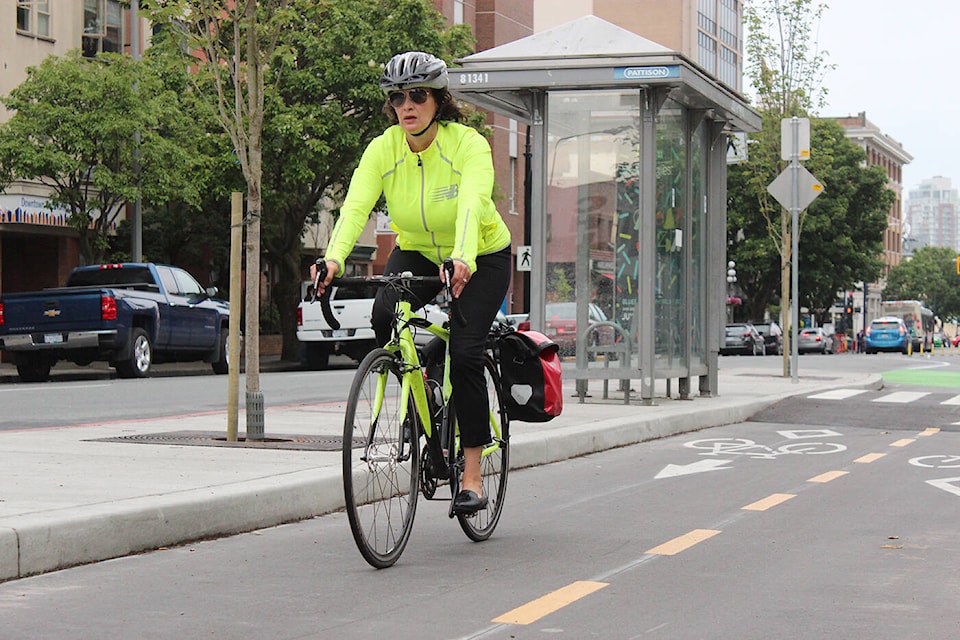New figures from Statistics Canada show Greater Victoria residents like to commute to work by riding their bikes or walking.
About one in 20 commuters in Victoria Census Metropolitan Area regularly commuted by bike, “by far the highest rate among Canada’s 41 largest cities,” according to Statistics Canada. Its analysis does not find this result surprising “given Victoria’s compact urban environment, relatively flat topography and generally mild winters.”
Statistics Canada also found that the region has the second-highest share of downtown workers who walk to work at 29.5 per cent, just behind Ottawa–Gatineau with 29.8 per cent.
These figures appear in a report that looked at the effects of the COVID-19 pandemic. Not surprisingly, fewer Canadians commuted to work during 2021 for two reasons. First, the pandemic led to what the report called “unprecedented employment losses” especially among businesses that require close physical contact indoors, such as restaurants, retailers and gyms.
Second, the pandemic caused what the report called a “massive shift” toward working at home in industries where possible. “Increases in working from home were concentrated in industries such as professional, scientific and technical services, public administration, finance and insurance, and educational services,” it reads.
RELATED: Rain wreaks havoc on Greater Victoria morning commute
Compared to five years ago, Statistics Canada recorded 2.8 million fewer commuters in 2021. Much of the decrease happened among those “car commuting”— those travelling to work by car, truck or van as a driver or as a passenger. Their numbers declined by 1.7 million from five years earlier to reach 11 million in May 2021.
The number of commuters has since risen, while still remaining below pre-pandemic levels, except for those driving to work. Drawing on figures from May 2022, the number of car commuters has risen back to 12.8 million. “However, the number of public transit commuters, at 1.2 million, remained well below pre-COVID-19 levels,” it reads.
In May 2022, urban transit ridership was just under 61 per cent of pre-pandemic levels in May 2019. These figures are related. As the report notes, “(driving) to work especially alone, lowers the risk of contracting COVID-19 through close contact with others.” Public transit, by its very definition, means close contact with others.
These trend lines threaten to reverse developments evident during the pandemic. Canadians travelling by car generally experienced shorter commutes and pumped less climate-change-causing greenhouse gases into the atmosphere in 2021.
Do you have a story tip? Email: newsroom@peninsulanewsreview.com. Follow us on Twitter and Instagram, and like us on Facebook.



